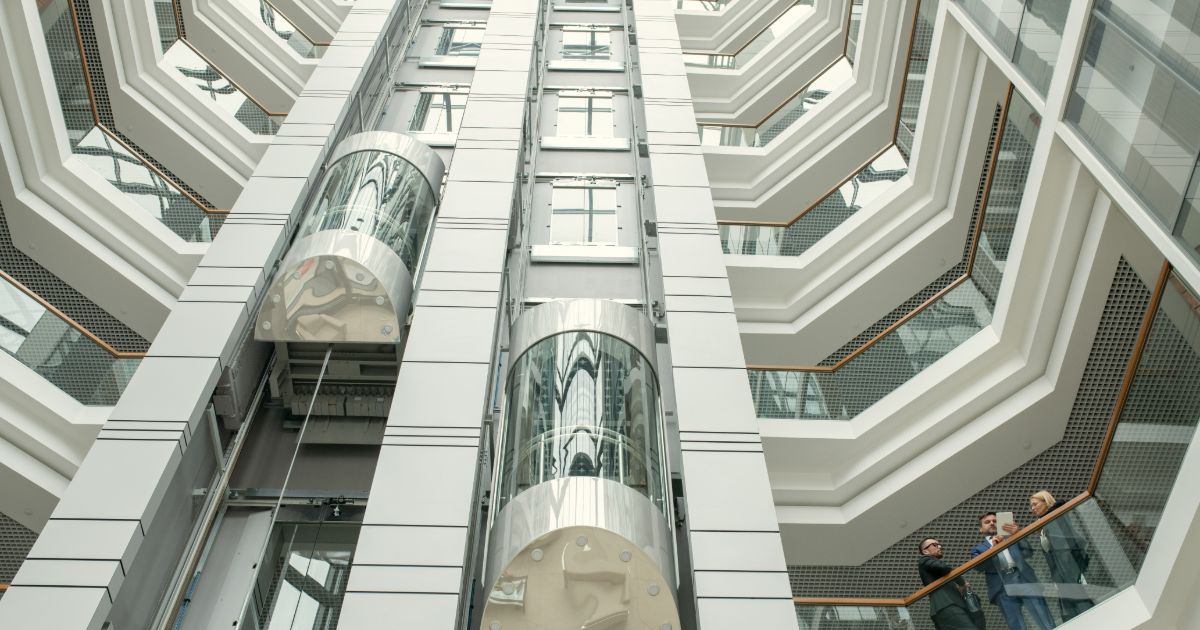Hydraulic and traction elevators are the two main types of elevator systems used in buildings today. Each system works differently and has its benefits and drawbacks. This article explains how these elevator types work, where they’re best used, and what distinguishes them.
How Hydraulic Elevators Work
Hydraulic elevators use fluid power to move the cab up and down. The system includes:
- A fluid-filled cylinder with a piston
- An electric pump that pushes fluid into the cylinder
- A cab connected to the piston
- A control system that manages movement
When the elevator needs to go up, the pump pushes hydraulic fluid into the cylinder. This pushes the piston up, which lifts the cab. When the elevator goes down, valves open to release the fluid pressure, and the cab descends using gravity.
Advantages of Hydraulic Elevators
Hydraulic systems offer several benefits:
- Lower upfront cost: They’re typically 20-30% cheaper to install than traction systems
- Simple design: Fewer moving parts means less complex maintenance
- No overhead machine room: The equipment fits in a small machine room at the lowest level
- Strong lifting capacity: Great for heavy loads in freight applications
Limitations of Hydraulic Elevators
These systems also have some drawbacks:
- Height limitations: Usually best for buildings under 7 stories
- Slower speed: Typically move at 50-150 feet per minute
- Higher energy use: Requires more power to pump fluid against gravity
- Potential for oil leaks: May need environmental containment systems
How Traction Elevators Work
Traction elevators use ropes or cables wrapped around a sheave (a pulley with grooves) to move the cab. The system includes:
- Steel ropes or cables connected to the cab and counterweight
- A motor that turns the sheave
- A counterweight that balances the cab’s weight
- A control system that manages speed and position
The counterweight typically weighs about the same as the cab plus 40-50% of its maximum load capacity. This balance means the motor only needs to overcome friction and the difference in weight between the cab and counterweight.
Types of Traction Elevators
Traction elevators come in two main varieties:
Geared traction systems use a gearbox between the motor and the sheave. They operate at speeds of 50-500 feet per minute and are well-suited for mid-rise buildings up to 20 stories.
Gearless traction systems connect the motor directly to the sheave. They are used in high-rise buildings and can reach speeds of 500-2,000 feet per minute.
Advantages of Traction Elevators
Traction systems have several benefits:
- Energy efficiency: Use 20-40% less energy than hydraulic systems
- Faster speeds: Move people more quickly in taller buildings
- No height limitations: Can serve buildings of any height
- Smoother ride: Provide a more comfortable travel experience
- Longer lifespan: Typically last 25-30 years with proper maintenance
Limitations of Traction Elevators
These systems also have some drawbacks:
- Higher initial cost: More expensive to install
- Overhead space needed: Require a machine room above the hoistway
- More complex maintenance: More parts means more potential issues
- Capacity limits: May not be ideal for extremely heavy loads
Choosing Between Hydraulic and Traction Elevators
The best choice depends on several factors:
Building Height
- 1-5 floors: Hydraulic often makes sense
- 5-20 floors: Geared traction is typically best
- 20+ floors: Gearless traction is the standard choice
Usage Patterns
- Low traffic, infrequent use: Hydraulic may be adequate
- High traffic, constant use: Traction offers better performance
- Heavy loads: Hydraulic has advantages for freight
Budget Considerations
- Tight initial budget: Hydraulic has lower upfront costs
- Long-term value focus: Traction offers better energy efficiency and lifespan
- Operating costs: Traction systems cost less to run over time
Space Constraints
- No overhead room: Hydraulic eliminates the need for a rooftop machine room
- Small footprint: Traction systems need less space at the bottom of the shaft
- Shallow pit: Some hydraulic systems can work with minimal pit depth
Environmental Impact Comparison
The environmental aspects differ significantly:
- Energy use: Traction systems use 20-40% less electricity
- Materials: Hydraulic systems require oil that needs eventual replacement
- Lifespan: Traction’s longer life means fewer replacements and less waste
- Modernization potential: Both can be upgraded with energy-saving features
Conclusion: Making the Right Elevator Choice
Hydraulic elevators are simple and have lower upfront costs. They are ideal for low-rise buildings with moderate usage and provide energy efficiency, faster speeds, and smoother rides. Traction elevators work in buildings of any height.
Traction elevators deliver the best long-term value despite higher initial costs for most modern commercial buildings over five stories tall. Lower-rise buildings with budget constraints may still benefit from hydraulic systems, especially if traffic is light. Understanding these differences helps building owners and managers make informed decisions that balance initial investment against long-term performance, efficiency, and maintenance needs.

